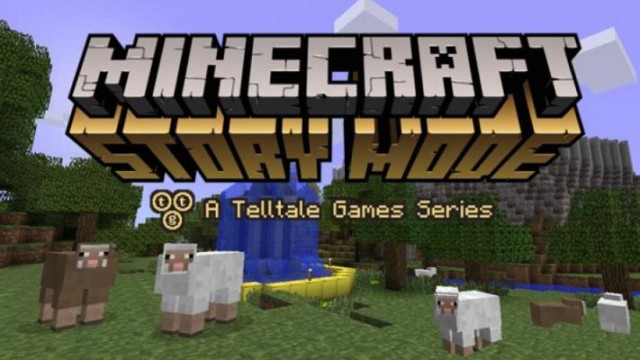Nine strangers sit in a circle, myself included, as my partner walks around. He’s waiting to see who we vote for. Because at least two of the people in the circle are Werewolves, and have been eating villagers left and right.
The village had already failed to identify the Werewolves and led to the lynching of two innocent villagers, and three people had gotten eaten. And we’re trying to find some hint on who the Werewolves are.
Well, the rest of the village is. I’m so bad at these games that I’m doing all the things that typically get players “killed.” I’m being quiet, I’m not voting, and I’m not bandwaggoning with the village discussions. I expected to be lynched very quickly (despite being a Villager, not a Wolf).
However, after about ten minutes, one of the players said “does anyone have any idea who the Werewolves are?” and I jokingly said “Probably the person wearing the least amount of clothing. Makes it easier to change, you know?”
To my horror, the rest of the village nodded and I watched them all point to the man two seats away from me, wearing shorts and a t-shirt. “No no!” I squeaked, my voice hoarse from 6 hours of moderating, “I was just joking!” But it was too late, and the man was “lynched” and removed from the game.
“I’m sorry!” I said as he stood up. He had a smile that was not unkind and started laughing.
“Why?” he showed me his card, where a Werewolf motif stared back. “I’m a Werewolf, you were supposed to find me.”
—
Last weekend, August 4-7th, I had the unexpected opportunity to attend Gen Con (“the best four days in gaming”). Unexpected, because my partner and I agreed that there was no way were could afford badges this year.
Cue a post on the Gen Con Indy Facebook page about three weeks ago, where my partner saw someone asking for moderators (badge and hotel included for eligible volunteers). Well, it turns out, my partner and I were Eligible Volunteers, so we ended up at Gen Con.
This was my second time going, with my first time being last year. And Gen Con is huge. More people cross through over the course of four days than the student population at Purdue University (turnstile attendance was more than 200,000 this year). This is a convention primarily focused on tabletop RPGs, card games, miniatures, and the like, but it also has a spot in its expansive repertoire for anime, cosplay, and video games.
As always, cons are an experience. And overall, my partner and I had a good one. We got to see a demo of the Dark Souls board game, which was kickstarted by Steamforged Games (it’s every bit as beautiful as it is difficult). My partner (sometimes literally) ran into a few of his favorite voice actors, and we had some great conversation with them. I made a little girl so happy she wouldn’t stop dancing until she fell over because I was dressed like a unicorn on Saturday (specifically, Helios from Sailor Moon, because August 6th was International Sailor Moon Day).
But, despite all the great times had, my partner and I were at Gen Con to work. To moderate a social deception game called Are You a Werewolf? between the hours of 6pm to 4am. And, honestly, before this weekend, I was not a fan of Werewolf. The reason is simple: I do not like to lie (and I’m also very bad at it).
—
Are You a Werewolf? is a simple game to play. Typically, you have fifteen players. They’re each given a card, which, in a basic game, has one of three things written on it: Villager, Werewolf, or Seer. In a game of 15, you have two Werewolves, one Seer, and the rest are Villagers. The object of the game, for the Villagers and Seer, is to find the Werewolves before the Werewolves “eat” them all. And the roles of everyone are kept secret; only the Werewolves know who each other are.
The game has two “phases”: night time, where the Villagers “sleep” and the Werewolves reach a consensus on who to “kill” (remove from the game). The Werewolves then sleep and the Seer wakes up, to have one person’s role revealed to them. If they’re lucky, they’ll find a Werewolf. If they’re not, well, at least they’ll know who isn’t “eating” people.
Phase two is the daytime, where the village tries to find a Werewolf by voting who to “lynch.” This is done by majority vote.
That, obviously, is where the social deception comes in (and why I suck at this game so much). Because Werewolves spend the day time trying to not get caught and convince people to vote for Villagers, and Villagers/Seers spend the day time trying to convince people they are not the Werewolves.
—
Back in 2013, David Eaves wrote “What Werewolf Teaches Us About Trust & Security.” He discussed typical strategies that werewolf players use, such as “Kill the Newbies” and using “noise” to the players advantage. He also discusses the idea of players using the first round to introduce themselves, and how a simple mishap is a certain death sentence.
This strategy, however, is predicated on the seer being able to safely communicate with those on their left and right. Naturally, werewolves are on the lookout for this behaviour. A player that keeps discreetly talking to those on their left and right makes themselves a pretty obvious target for the werewolves. Thus it is essential during each round that everyone talk to the person to their left and right, regardless of whether they have anything relevant to say or not. Getting everyone talk creates noise that anonymizes communication and interferes with the werewolves’ ability to target the seer.
How interesting that very few of these rules actually carried over into the games I moderated.
For example, Eaves insists that if newbies make themselves known, they’ll be the first eliminated. However, in all of my games, the newbies survived longer than most experienced players, and one game asked the newbies to collectively pick the first person to be lynched. Their reasoning? “Newbies always die, so we won’t kill a newbie on the first go.”
This was when I noticed two things about the way the folks I was moderating played Werewolf.
- Everything in the game relied on someone’s ability to “other” a player so much that the rest of the village would turn against them.
- No one wanted to vote via bias, with some exception.
The first point is self-explanatory, but the second might need some clarification. Specifically, no one wanted to vote to “lynch” someone who was a minority or new to the game. My games were almost always consisting of a majority of white males, and majority of them had no new players at all. So when someone would sit down at the circle that did not fit the majority (ie: a female bodied person, an “Out” LGBTQ person (typically those who were wearing “Gaymer” tags that we voluntarily picked up from Green Ronin), a person of color, someone who declared they were new, a child, etc), you could see the wheels churning. No one wanted to outright vote for the minorities to “lynch” them. Perhaps they were worried about appearing racist or sexist or homophobic. Regardless, there was some serious deliberation in who to lynch, because despite being “just a game,” my players were doing their best to vote along suspicion lines and not vote via externalized or internalized biases.
That is not to say that votes were never cast towards minority players. At least in my games, they just were never cast on Night One, and were only cast when enough other “evidence” could be presented.
The exceptions to Observation 2 were joke biases. That is, biases that were intrinsic to the game but not serious or a judgement of a person. These “biases” would lead a vote if the village had literally nothing else to go on. An example of these is“the hairiest person is obviously a werewolf” trope. Sorry dudes with beards.
—
It was interesting to see some of the mental olympics players would have to go through to “other” people enough to start a lynching. Though played all in good fun, it was amazing to see what could get you killed in a Village. Being too quiet, too loud, wearing shorts, leaning back, leaning in, sitting too close to someone who got lynched before, sitting too close to someone who got mauled the night before, inciting a vote, not voting at all…
Depending on who you were, nothing was a safe action.
This narrative sounds familiar, doesn’t it?
It’s the same narrative that is used in victim blaming and blaming towards people of color and minorities. Once you’ve been “Othered,” nothing can save you. And little, random things can “Other” you.
In the one game I played, a player was eliminated because I joked about the fact that they were wearing shorts. Despite the fact that shorts and a t-shirt is highly acceptable clothing to wear during the summer. Later, the reason we “lynched” the last person was because they were smirking.
Very rarely was the “othered” person able to talk their way out of a lynching. It was like watching the beginning of an avalanche.
I never did ask the people who got lynched how they felt. I wonder what their responses would have been.
—
Ultimately, I have to give props to Full Moon Gaming, the organization that runs Gen Con’s Werewolf games. Firstly, for giving me and my partner free passes this year so I could go back to the Con. And secondly, for giving me about six hours every night to watch how mob mentality works and see more othering in action.
Werewolf is still not a game for me, but I don’t mind moderating it. I think it can show us a lot about people, if only “in a game.”




